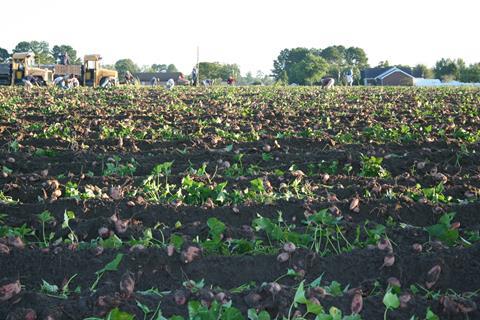North Carolina Sweetpotato Commission maintains commitment to consumer marketing programmes
A challenging growing and harvest season will hit production of sweet potatoes in North Carolina this year, despite acreage increasing slightly. According to the North Carolina Sweetpotato Commission (NCSPC), yields may be down 20-30 per cent across the state.

Despite the reduction, North Carolina remains the largest producer of sweet potatoes in the US, accounting for over 60 per cent of national output, and the number one exporter of sweet potatoes into Europe.
According to NCSPC, fluctuations in production are not uncommon. For the past ten years, there has been volume movement up and down because of weather conditions, global markets, the pandemic and its lingering impacts on the foodservice industry, as well as the continued reality of rising input costs and labour challenges.
The commission’s executive director, Michelle Grainger, said: “2023 and 2024 have proven to be challenging years for agriculture in North Carolina that have forced sweet potato growers to make hard decisions to stabilise our industry.
“It isn’t any one factor causing these changes, or even market demand,” Grainger continued, “but like every farmer, optimism remains, and our industry is making forward looking investments in consumer research and retail programming to drive sales.”
Regardless of acreage changes, the NCSPC said it plans to continue to educate consumers in Europe on the value of sweet potatoes as a nutritionally dense superfood with excellent shelf-life and culinary versatility through a variety of European marketing campaigns and buyer engagement strategies.
“The North Carolina sweet potato industry recognises that it is inevitable that volume will be impacted with the current yield decreases and buyers should work with their grower-shippers on a regular basis to evaluate seasonal changes and volume against demand,” NCSPC said. “Buyers should also work with the NCSPC to establish promotional programmes that support strong sales and pricing programmes that drive consumer value and retail margin.”



